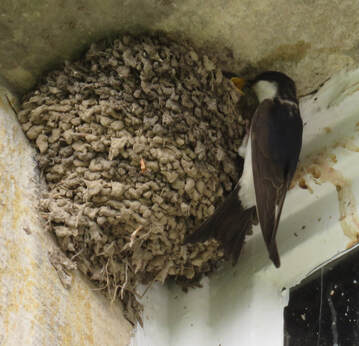 House martin clinging to enclosed nest
House martin clinging to enclosed nest Trust me, I'm a Nature Writer. I hope you do. If I'm at all unsure I consult naturalists of repute. Jeff Holmes will confirm identification and encourage me to look closely, to think it through, to make connections and interpret. Here's field-craft at its best.
All week I'd watched house martin in flight, studying flight-patterns and calls. I knew I'd seen them at Sizergh Castle in previous summers but could find none on this latest visit. A surprise awaited me in the day's cache of images.
The other nest I'd photographed puzzled me. The construction is cone-shaped and enclosed and the bird clinging to its side has a bright-white face that isn't swallow. The jizz is house martin. So I sent the image to Jeff Holmes and he confirmed it. You can see not only the white on the face but its forked tail angled toward the centre of the image. No streamers, a moderate fork.
Jeff writes as follows: House Martins have more white on various parts of the body and shorter tails. Also the structure of the nests is different. The House Martin has a nest built of mud pellets and a small U shape opening by which it squeezes in and out. Swallows build an open cup nest of mud mixed with grass. I presume because the Swallow is inside the building it is sheltered from the elements so an open nest is fine.
The white rump is visible, and the short tail. Both Swallow and Sand Martin lack this feature. In Somerset, compared to last year there appear to be more House Martins around which is good news. They are affected by mud drying up because they need a certain consistency to enable the mud to stick well when applied to the house wall.
I can see the bluish colour on the head and mantle of the bird. In flight, you might glimpse that white rump but here with the wings angled toward the head both rump and tail-shape show clearly. The image captures the bird at the moment of touch-down and it reminds me of angels in Medieval art, an Annunciation.
There were numbers of hirundines skimming low over the castle lawn and the chirruping of nestlings came from niches all about the castle facade. So I wonder how many other house martin are nesting side by side with swallows. Both birds are colonial and I'd expected to find each species nesting discretely, not intermixed.
So, to friends whose homes have resident hirundines do take a good look and see if you have both species nesting alongside each other. And consider their choice of nest site, on the facade of a building for house martin or in a more sheltered spot within for swallow. Last year, I found a colony of house martin nesting in the eaves of a lonely church and it's more usual to find each species nesting separately.
For a nature writer, curiosity is infinite. The story evolves and there's always more to discover. All that chirrupping about Sizergh Castle and the number of birds feeding low over the lawn suggests many more nests. I like a degree of mystery and the castle holds many more secrets.
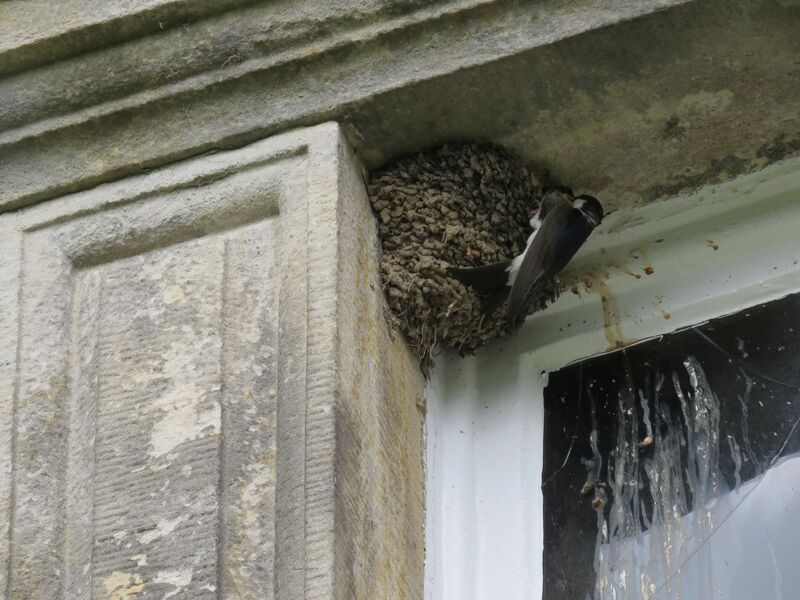
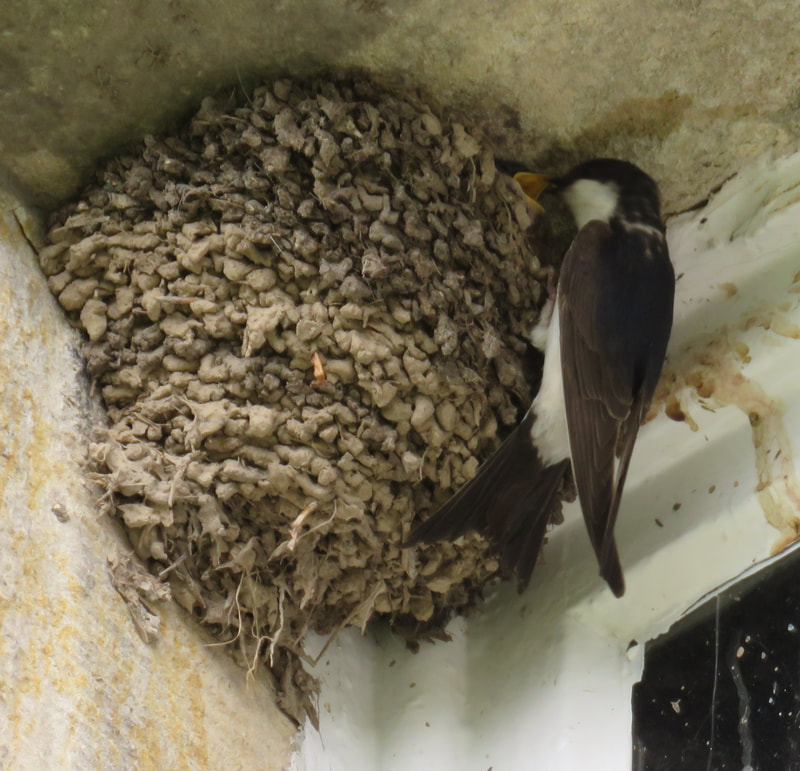
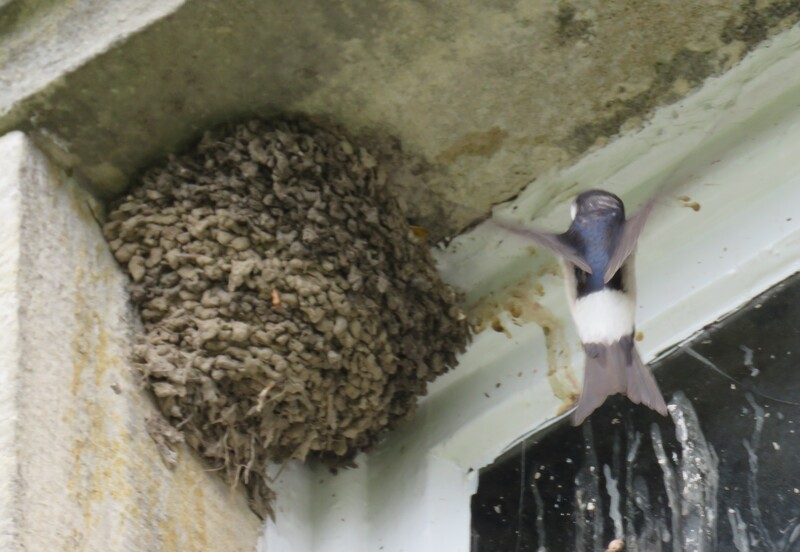

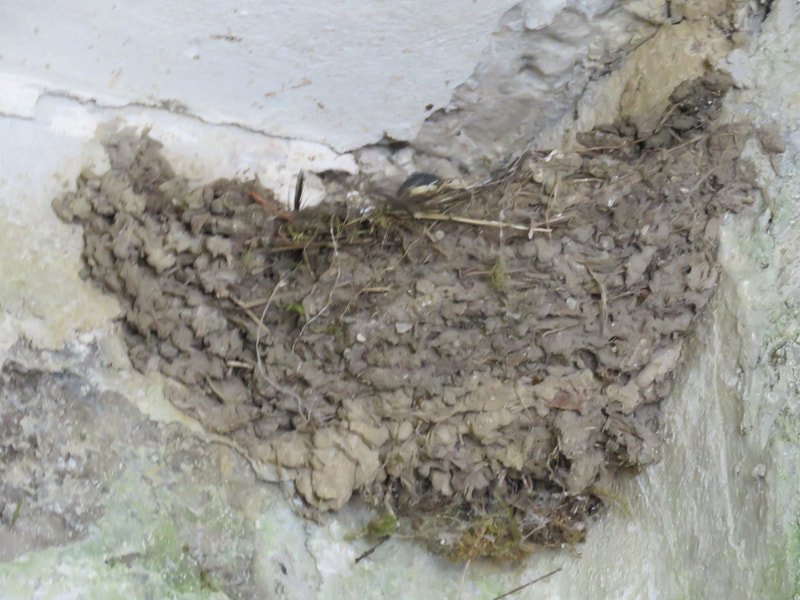
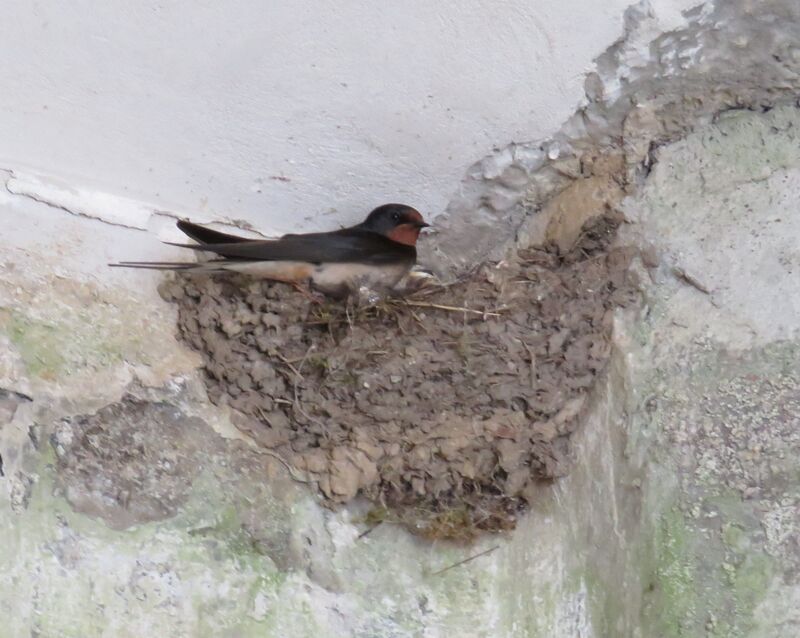

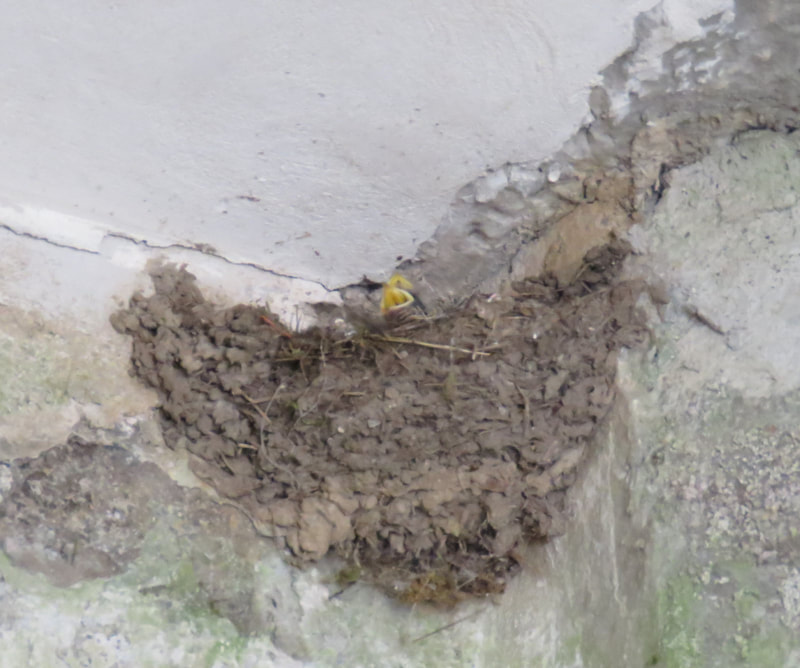
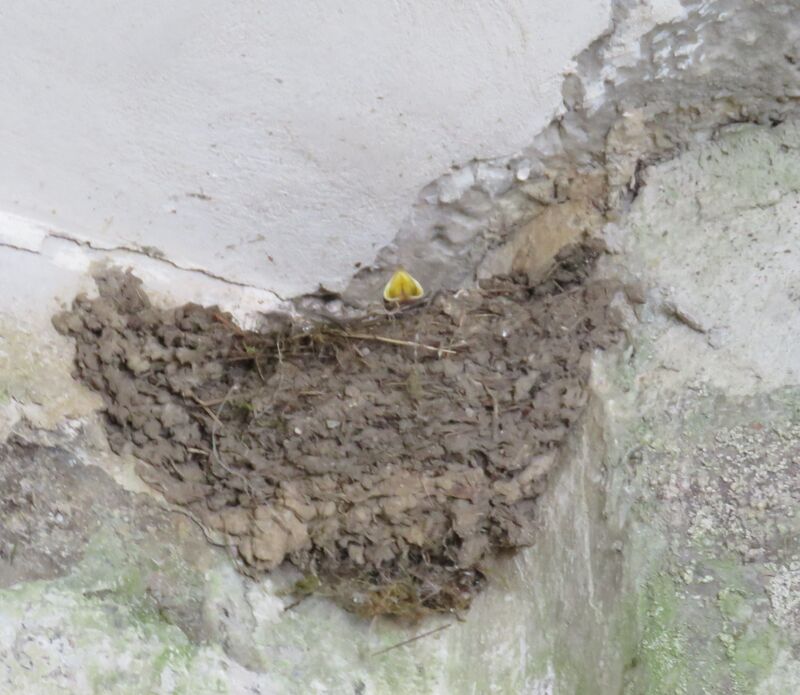
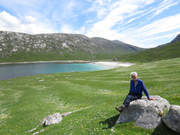
 RSS Feed
RSS Feed